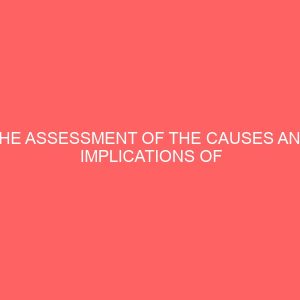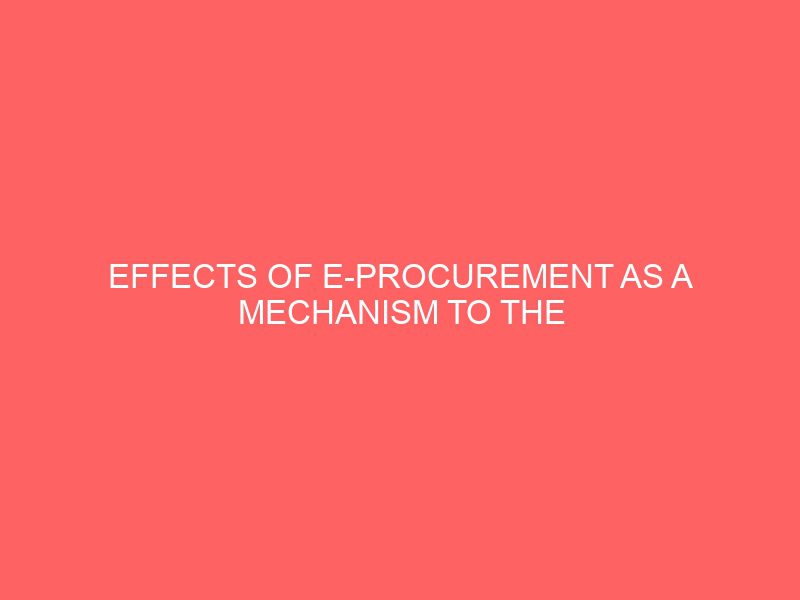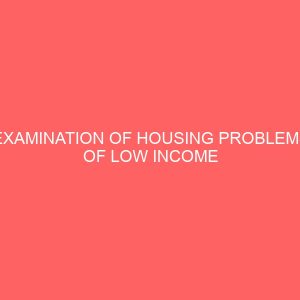Description
CHAPTER ONE
INTRODUCTION
1.1 BACKGROUND OF THE STUDY
E-procurement involves the use of internet, information networking systems, such as electronic for the purchase and sale of supplies, work, and services between the government and other firms. E-procurement value chain consists e-Tendering, e-Auctioning, of indent management, e-Informing, vendor management, catalogue management, Purchase Order Integration, Order Status, Ship Notice, e- invoicing , e-payment , and contract management.
Baily (2008) classifies e-procurement into the seven categories: the first is Web-based ERP (Enterprise Resource Planning)., E-MRO (Maintenance, Repair and Operations), E-sourcing, E-tendering ,E-reverse auctioning , E-informing ,and E-market site. According to Eadie et al (2007), the benefit of E-procurement include, Price reduction in tendering, efficient for the finding and connecting of new sources, Lower Administration costs, Reduction in procurement staff and competitive advantage over competitors. A centralized department in the firm can oversee the coordination of all procurement activities for different branches and different offices worldwide can access the same documentation when required, this gives a distinct advantage over the much slower process of having to post documentation between offices. This extends the supply chain beyond geographical boundaries to a much wider group. It facilitates timely delivery and quality delivery of products and services, greater market access but also increased productivity. The research seeks to investigate the effects of e-procurement in the public sector.
The rise of e-business in the late 1990’s led to the development of new opportunities related to procurement: e-procurement, spend management, outsourcing and joint product design (Lancioni, Smith, and Oliva, 2000). E-procurement is defined as an Internet-based purchasing system that offers electronic purchase order processing and enhanced administrative functions to buyers and suppliers, resulting in operational efficiencies and potential cost savings.
Most of the companies nowadays can be seen as being composed of three primary processes which are purchasing, manufacturing and distribution based on the overall flow of materials (Thawiwinyu and Laptened, 2009). So, in order for the companies to remain competitive in the market, it’s must reduce the costs of their components or parts and materials by sourcing from cost saving suppliers. Nowadays most of the organizations are increasingly doing E-Business using information and communication technologies and the additional use of internet too. The traditional procurement which is lowly, back-end process has been transformed into E-Procurement with the emerging technologies that make everything possible and within reach. Furthermore, with increasing on competitive pressures, supply chain management professionals must continually find solution to reduce costs, increase efficiency, and also to reduce the longest lead time. Procurement now is seen as a core player in supply chain focus on time to market, product quality based competition, cost efficiency, inventory management, and customer uncertainty.
According to Monczla and Morgan (2000), this can be solved by the key competitive priorities for the 21st century is the maximization of Internet-based technologies such as E-Procurement. In 1990’s along with rapid growth of the Internet, Electronic Commerce (EC) in traditional market was founded. This study attempts to assess the e-Procurement success factors in telecommunication organizations of Nigeria. The main purpose of this study is to understand how the various factors play their role in making e-Procurement technology a success for the business.
Despite the e-procurement application benefits seen in the simplification and speeding up all stages of procurement, including tendering, design and production development projects, ordering, requisitioning, stock management and payment. However, the electronic infrastructure of Tanzania cannot absorb the current technological changes occurring at a fast rate. Information technology is also costly when it comes to replacing the former system. Moreover, managing the risks, which may arise due to the radical change in business process and the attitude of the people who operate the system, is challenging (Ishobeza, 2006). Through public system, the Public sector always experiences delays in completing the procurement process by using manual procurement (tendering system), which consumes a lot of money to complete the procurement cycle from the planning stage to receiving the goods or services in time. Such cumbersome procurement reduces the efficiency of using public funds.
Moreover, the procedure applied in public procurement systems in Nigeria covers many sub functions, which involve the user department, Procurement Management Unit, Tender Board and the Accounting Officer. Usually, user departments initiate the procurement process and disposal by tender requirements. They also propose technical inputs in the statements of requirements and forward them to the Procurement Management Unit. The tender board on the other hand, is responsible for the adjudication of recommendations from the Procurement Management Unit and awarding of contracts and the Accounting Officer who approves the procurement in the public sector as stipulated by the public procurement Act No. 21 of 2004 and its regulations of 2005.
It has been established that breaking down the physical barriers of electronic procurement allows more transparent and efficient information flow. It also, improves access to information and services. Beneficiaries of enhanced procurement include not only the government and suppliers but also the public whose access to transparent information on the expenditure of the taxpayer’s money is enhanced.
Presently, however, electronic procurement has yet to be fully used to maximize the efficiency of public procurement needs. Nevertheless, if such a system is properly implemented, it would enhance the provision of accurate information in terms of procurement of goods, works and services.
1.2 STATEMENT OF THE PROBLEM
E-procurement in the public sector offers a lot of promise. A government can negotiate good deals with suppliers when it can accumulate all of its purchases and negotiate as an entity. The negotiated agreements when made available in the e-procurement system can be accessed by the end users by logging into the system via the internet. The end users can place the order electronically utilizing the negotiated deals. The e-procurement system when interconnected with an organization’s internal financial system minimizes the transaction processing costs. E-procurement via automated administrative procedures can enhance monitoring abilities and minimizes opportunistic behavior among purchasing officials.
Moreover, public sectors strive to find new ways of cutting down on costs and save time while improving records management. To meet these challenges, public sectors are required to consider their attitude towards electronic procurement and its benefits. After all, the formulated electronic procurement can help the organization to ensure economy and efficiency in the use of public funds, integrity, accountability, fairness and transparency in the procurement process.
To promote electronic procurement, the Government of Nigeria through the Public Procurement Regulatory Authority, started first by training all procurement practitioners in the Public Sector on the Procurement Management Information System (PPRA Annual Performance Evaluation Report, 2008/2009). Through such a system, the government can reduce corruption or collusion by minimizing the risk of data manipulation or misuse. At the same time, the procurement data and information can be made transparent for government decision-makers who, by using these data, can make informed decisions regarding public procurement. Despite these efforts and potential, Tanzania has yet to implement the electronic procurement.
As such there was a need to determine, the E-procurement challenges in the public sector in an attempt to deliver the value of products, works, or services at a minimum cost the study was conducted in the broadcasting corporation of Oyo state as a case study of the public sector operating in Nigeria.
1.3 OBJECTIVES OF THE STUDY
- To determine the effects of e-procurement in the public sector
- To investigate if the implementation of e-procurement can serve as a mechanism to challenges in public sectors
- To establish the extent of e-procurement adoption among public corporations in Nigeria
- To establish the challenges facing the adoption of e-procurement in public sectors of the country
- To determine the relationship between e-procurement and procurement performance in Nigeria’s public sector
1.4 RESEARCH QUESTION
- What is E-procurement?
- What is the effect of e-procurement in the public sector?
- What electronic procurement challenges do the public sectors faces in the effective use of the public funds through procurement?
- To what extent does the Public sector use the e-Procurement to acquire goods, works and services?
- What are the benefits of using e-Procurement in the public sector Organization’s?
- What nature of e-Procurement implementation challenges does the public sector face?
- Which system is suitable for the Public sector procurement practices?
1.5 SIGNIFICANCE OF THE STUDY
The study shall proffer an appraisal of the effects of e- procurement in the public sector E-procurement involves the use of internet ,information networking systems, such as electronic for the purchase and sale of supplies, work, and services between the government and other firms . E-procurement value chain consists e-Tendering, e-Auctioning, of indent management, e-Informing, vendor management, catalogue management, Purchase Order Integration, Order Status, Ship Notice, e- invoicing , e-payment , and contract management.
The findings of the study have provided information for other researchers to conduct further investigation in the area. The research report would also serve as a study guide for the students. Moreover, the evaluations and recommendations from the study would be useful to public sectors leaders in Nigeria, as it provides a clear picture on the reality of electronic procurement method.
Above all, the study has contributed to the body of knowledge on procurement in the public sector of Nigeria.
1.6 RESEARCH HYPOTHESIS
Ho: E-procurement serves as a mechanism to challenges in the public sector
Hi: E-procurement does not serve as a mechanism to challenges in the public sector
1.7 SCOPE OF THE STUDY
The study focuses on the appraisal of the effects of e- procurement as a mechanism to the challenges in the public sector is limited to the Broadcasting Corporation of Oyo State, Nigeria (BCOS)
1.8 LIMITATIONS OF THE STUDY
The study was confronted by some constraints including logistics and geographical factor.








Reviews
There are no reviews yet.